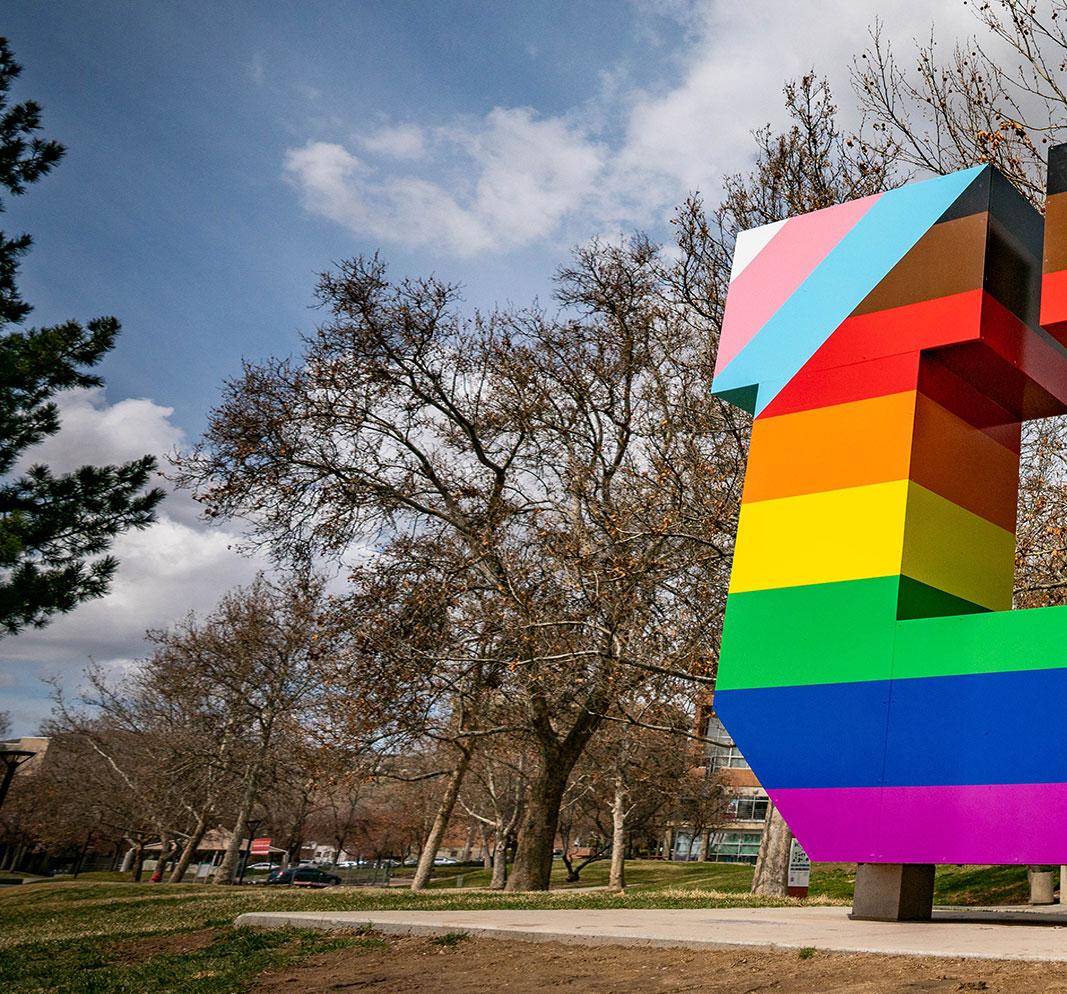
7 minute read
Safe Spaces for All
from July/August 2021
Safe Safe Spaces Spaces for for All All ByCANDICE YACONO
Courtesy University of Utah For many students at U.S. universities, their visit to a campus LGBTQIA+ center might be where they feel understood for the first time. They’re safe places for students to congregate, celebrate and receive services like counseling, healthcare and scholarships. The centers often serve as a lifeline for those students who don’t receive such support in their home communities. At the University of New Mexico, LGBTQ Resource Center Director Frankie Flores (They) says they want the center to live up to the motto that when the most marginalized are upheld, everyone benefits. (Third-person personal pronouns, used to describe a person
Advertisement
Through or people, include the gender-neutral they/them/theirs. These words traditionallyeducation, referred to a plural number but today are used advocacy and by some individuals who identify as gender support U.S. nonbinary or who prefer not to share gender information. Other pronouns include theuniversities feminine she/her/hers and the masculine strive to create he/him/his.) inclusive Flores has earned the nickname of Mama Frankie because of their involved nature with campuses for their students. They frequently spend time in LGBTQIA+ the center’s common area, where they offer students. advice or just listen. This has led to Flores recognizing and filling needs among the
Courtesy Vanderbilt University
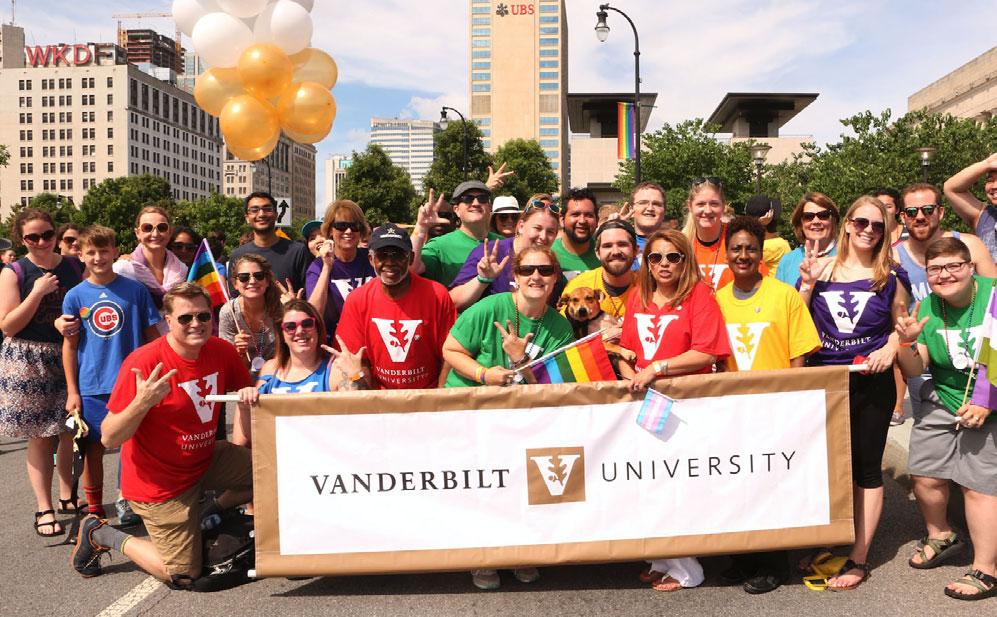
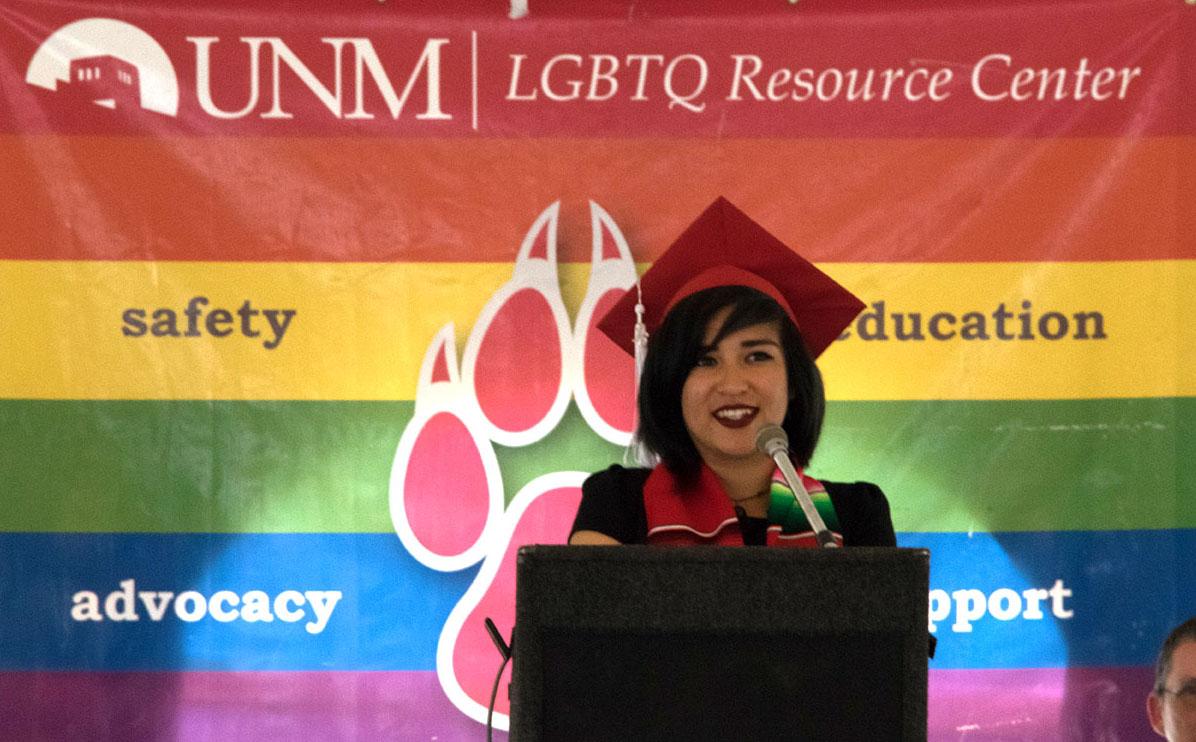
Courtesy University of New Mexico
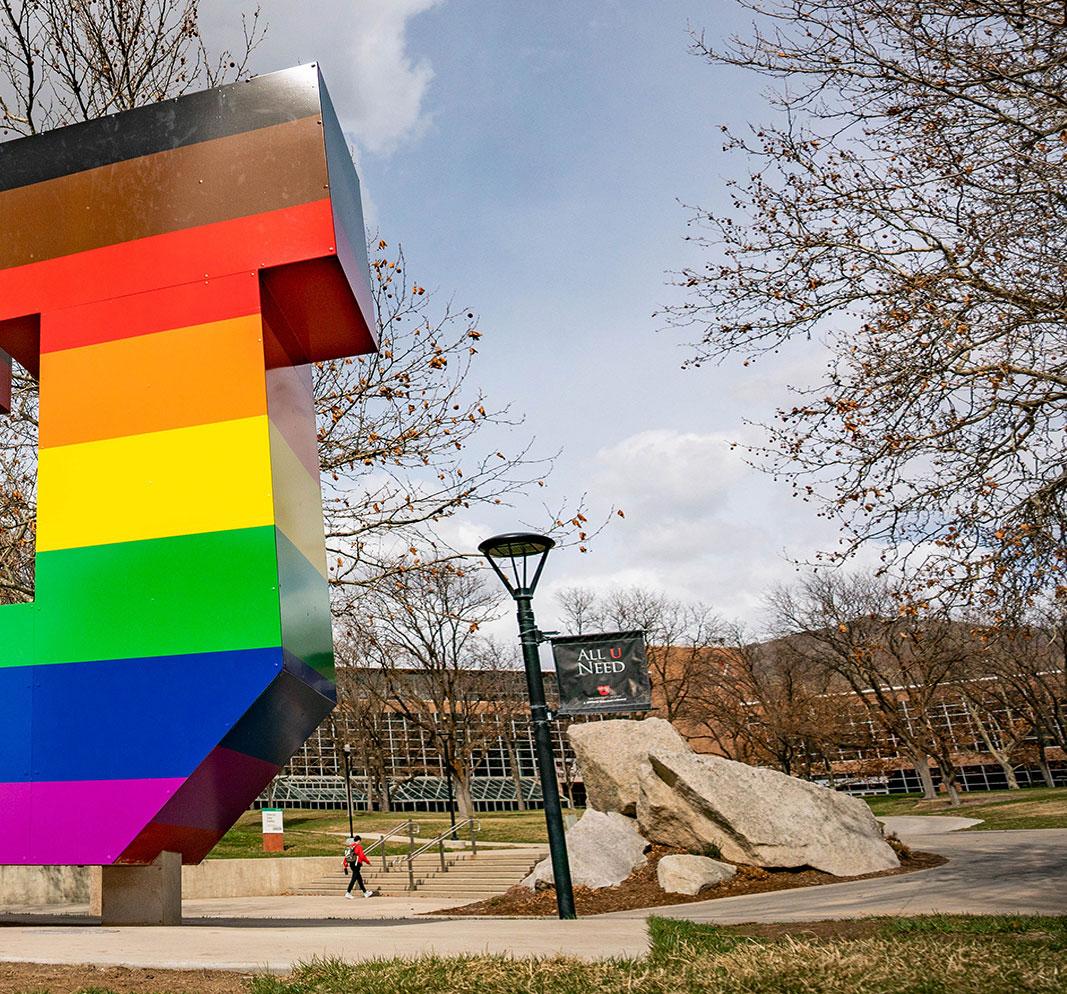
student population. For example, when Flores heard several students talking about asexuality, they decided the center would begin celebrating Asexuality Week. Students identifying as asexual were thrilled to be represented.
Flores’center offers many extra services on top of traditional ones, such as always having simple meals on hand to ensure students never have to go hungry. The center offers regular HIVtesting. Flores says the center has a resident counselor who offers confidential services because many students don’t feel comfortable seeing other on-campus counselors.
The center’s physical location is a haven for many students who are afraid to come out on campus, and often gives them the confidence to take that first step. Flores recalls one quiet male student who donned a dress at the center and Flores walked the student to class in their first coming-out experience.
Flores is an advocate for changing campuswide policies in order to bring change that benefits everyone. Their center worked with the university to permit the use of chosen instead of given names after a student in gender transition nearly failed a major assignment because they wrote their chosen name on it.
The University of Utah’s LGBTResource
Above left: The well-known Block U on the University of Utah campus wrapped in colors from the Progress Pride Flag in honor of the university’s annual Pride Week. Top: Representatives from Vanderbilt University at the Nashville Pride Parade. Above: The annual Rainbow Graduation is one of the oldest traditions of the University of New Mexico’s LGBTQ Resource Center.
Below: The University of New Mexico’s LGBTQ Resource Center strives to create a welcoming and inclusive atmosphere for all members of the university and surrounding community.

LGBTQ Resource Center, University of New Mexico
https://lgbtqrc.unm.edu/
LGBT Resource Center, University of Utah
https://lgbt.utah.edu/
Vanderbilt LGBTQ Policy Lab
https://bit.ly/3s5OMgd
Center also helped its institution switch to self-identified chosen names, gender and sexual identity in campus systems. The center was first housed in a converted janitorial closet before literally coming out of the closet and into larger offices. Today, the center empowers LGBTQIA+ students to grow as leaders and learners in many ways, says Clare Lemke (She/her/hers), the center’s director. Students learn to navigate the university environment, explore their own identities and develop as leaders. The center also assists students financially. It worked with alumni to award $33,000 in scholarships for the 2021-22 school year.
The University of Utah’s LGBTResource Center, like the one at the University of New Mexico, continues to impact students’lives despite the pandemic. It virtualized its programming and services, introducing online office hours and a virtual student lounge. “This allowed us to reach many students who typically would not be comfortable entering our physical lounge,” says Lemke, so online efforts will continue this fall. More than 60 students participated in the center’s Lavender Graduation for LGBTQIA+ students this year, which was a record high.
Some universities go beyond the studentand institution-centered LGBTcenter and have organizations or think tanks dedicated to tackling policy issues in their states and in the world at large. Vanderbilt University in Tennessee has an LGBTcenter but also houses an LGBTPolicy Lab. It studies and addresses how public policies impact the lives of LGBTQIA+ people, bringing together an interdisciplinary team of faculty, students, staff and community members to examine the causes and consequences of such policies and advocate for change. The lab has raised more than $2 million in outside funding. Policy Lab scholars have also published their research in prestigious publications.
Lemke offers simple ways for institutions to tackle inclusion and advocacy issues. “One of our values as a center is that LGBTQIA+ advocacy is all of our work. Cultural change does not happen on a campus via a single office. Each person—student, faculty or staff—can make a difference in their area of influence, no matter how seemingly small, in working toward a more inclusive, equitable campus,” she says. “Start by noticing gaps and barriers in how students are experiencing your institution, ask questions about how a policy or practice impacts LGBTQIA+ students and other students with minoritized identities, and seek out professional development on how to incorporate more inclusive practices into your specific role.”
Why Do Many Americans List Pronouns
on Social Media Profiles?
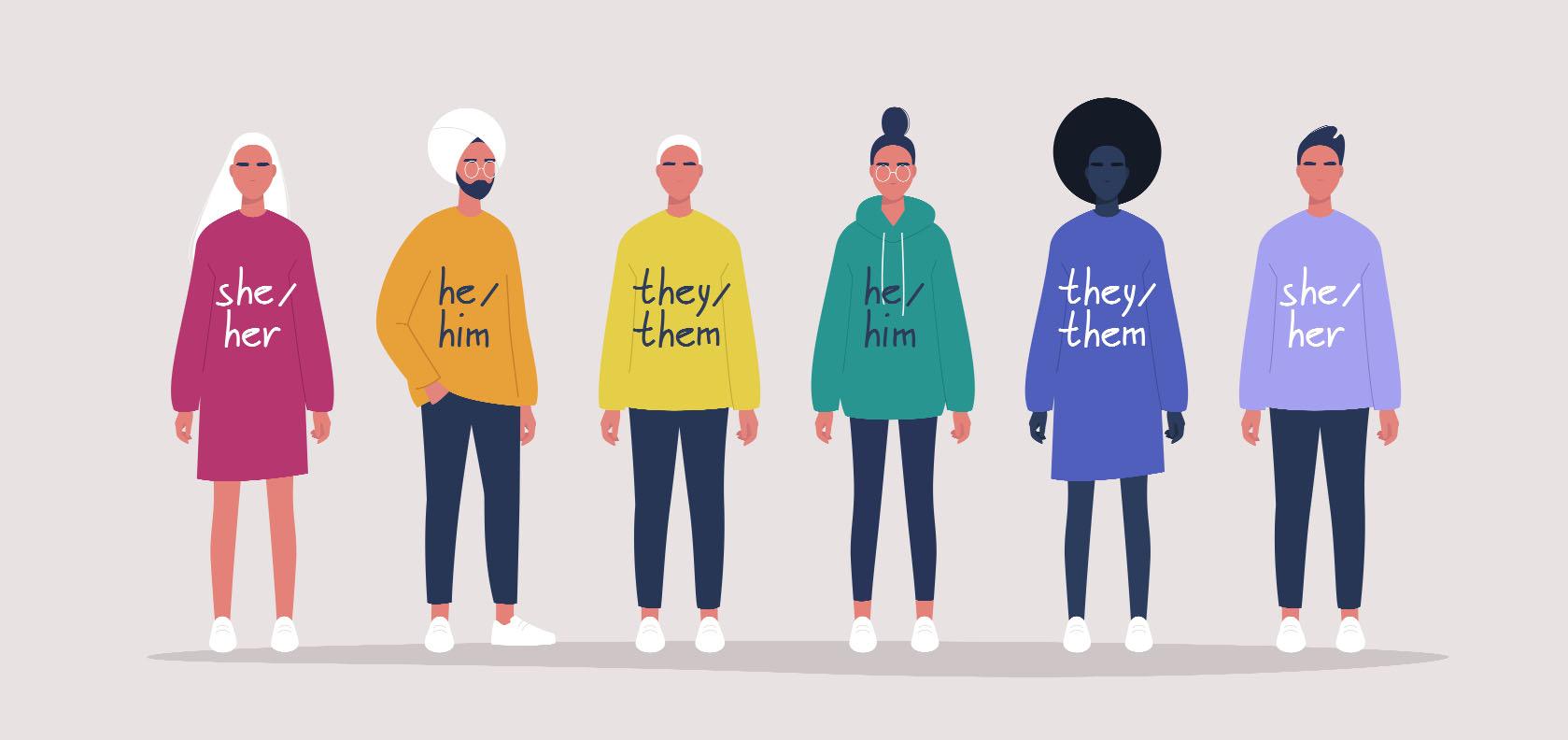
ByLENORE T. ADKINS
In the United States, it’s becoming increasingly common for people to “share their pronouns.” Third-person personal pronouns are used to describe a person or people, in American English grammar, as the subject, as the object or in the possessive.
These pronouns include the gender-neutral they/them/theirs—words that traditionally refer to a plural number but that today are used by some individuals who identify as gender nonbinary or who prefer not to share gender information. Other pronouns include the feminine she/her/hers and the masculine he/him/his. Some people are pioneering gender-neutral pronouns such as ze/zir/zirs.
Many Americans are including their pronouns on social media profiles or name tags or as part of email signatures. They state them in meetings, whether online or in person, and at other venues.
Shige Sakurai, author of the 5-year-old mypronouns.org, goes by they/them/theirs pronouns. They see sharing pronouns as a way of getting to know someone. Knowing and using someone’s pronouns avoids accidentally assuming an incorrect gender based on a name or an appearance.
“People have the opportunity then to share how they want to be referred to,” says Sakurai, also founder of International Pronouns Day. “Learning names is important too, and learning how to pronounce them correctly is important. To me, [pronouns are] an extension of that—of your name and how you want to be referred to.”
While sharing pronouns is not new— Sakurai has seen it happen in LGBTQI+ communities for more than two decades—it is becoming more common in the United States. (LGBTQI+ stands for lesbian, gay, bisexual, transgender, queer and intersex people, with the “+” signifying all the gender identities and sexual orientations that are not specifically covered by the other initials.)
Pronoun proficiency
LinkedIn, Twitter, Instagram and other social media networks give users the option to indicate their pronouns, the Thomson Reuters Foundation reports.
American society is showing acceptance of the trend. Nearly 1 in 5 U.S. adults knows someone who goes by gender-neutral pronouns, according to a survey by the Pew Research Center.
During his first few days in office, President Joe Biden signed an executive order to prevent discrimination on the basis of sexual orientation and gender identity. “It is the policy of my Administration to prevent and combat discrimination on the basis of gender identity or sexual orientation, and to fully enforce Title VII and other laws that prohibit discrimination on the basis of gender identity or sexual orientation,” the order says.
The White House also debuted a website contact form with gender-neutral pronouns and the nonbinary prefix “Mx.” And the Department of State announced on June 30 that U.S. passport forms will allow applicants to choose male or female gender, regardless of what their other documents indicate, and will eventually include an option for nonbinary, intersex and gendernonconforming people.










